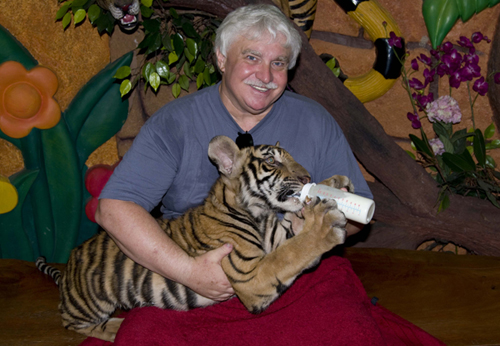 |
Noumea sp.
Image courtesy of Jim BlackAmbon, Indonesia
Nikon D-300 in Subal Housing with Ikelite strobes.
Copyright 2012, Jim Black
Noumea sp. Undescribed
Noumea sp. (undescribed) This critter has generated a great deal of discussion amongst a small circle of slug-o-philes. It puts me right back on my "Hey Guys these creatures are Variable diatribe." I like the careful observation and the logic I read in the flurry of e-mails below (authors to remain anonymous) -
"Nothing in the Indo book seems to resemble it as the colors don't match up correctly."
"It is not Noumea flava because the rhinophores are red. Obvious!"
"Not N. crocea either. N crocea has a white marginal band. Obvious!"
"Noumea sp. #4 is closest. But from the pics in the book...my specimen doesn't have the bright yellow color bits on the front-top mantle...and the body doesn't have the porous sponge like texture on its back as the picture of Page 247 shows. The skin is smooth on mine."
"Also...notice the slight faint red band on the mantle on my picture...very slight , but it is there. Noumea sp #4 (page 247) doesn't have that either."
"Yes, I noticed that too which prompted me to think it was a morph of N. flava, but then what do I know! Dave is going to call the ID on this one! Tough call indeed!"
".....it isn't flava ...flava has yellow rhinophores . Its not N. laboutei because it has a red marginal band. I think this guy sits by itself + is difficult to try to isolate it by color........until someone sticks it under a microscope or does DNA and nails the ID to be sure??? "
"I still don't think it is sp.#4 (p. 245) because of the faint red band."
I love it when enthusiasts write these weeklies for me. Okay, let's take another look. First all the observations mentioned above are correct except one. More on that one in a few sentences.
Back to "variation" - although the Noumea's are for the most part fairly consistent in color - how about this - I have always wondered if Noumea sp. 4 and sp. 5 were not just variations of N. verconiforma (as we suggested in our text). Aside from the drastic difference in body color, the similarities are compelling. The differences in dorsal texture mentioned above might only be the result of different lighting, as I know these guys photograph very differently. Also the white/yellow patches on the body. These are mantle glands and will change with the maturity of the animal. Jim's critter looks pretty small.
Now the cardinal flaw - don't make up your mind based on one view of a specimen only. Jim says his critter has a slight faint red band on the mantle. He noted this in a second photo which of the animal which is a head shot. The photo in the Indo-Pacific book on page 247 does not show the head clearly but does show the posterior edge of the mantle, and it clearly has a red band.
Whether Noumea sp. 4 & sp. 5 are the same as N. verconiformis will have to wait, but I am confident that Jim's critter is the same as we presented as Noumea. sp 4.
Gig Harbor, Washington
Aug. , 2012
Jim Black on location in Thailand with friend
 |
Jim is retired from US Airways after 27 years as a pilot..., flying Captain on an Airbus 330 Internationally. Diving since 1970...with over 5200 dives logged. Shoots Nikon D-300 in Subal Housing with Ikelite strobes. Macro Mate on 105mm for supermacro. Jim's photography has been featured in a number of books and publications including Helmut Debelius' Nudibranchs and Sea Snails of Gosliner, Behrens and Williams Coral Reef Animals of the Indo-Pacific. A photo of Jim petting a shark in "Sleeping Shark Caves" off Isla Mujeres Island, Mexico, taken by Amy Foster his significant other, recently appeared in Dave Behrens' Diving Guide to Cozumel, Cancun & The Riviera Maja.
Jim has been a solid supporter of the Slug Site since day one. His countless contributions put him near the top of the list of photographers who have greatly expanded our knowledge of sea slugs. There are a lot of kids in the formative stage of their education who are getting their first introduction to our sea slug friends via the great photographs Jim and other contributors have made to the site. My hat is off to Jim for making this presentation possible! Send Jim email at jim.black14@verizon.net
|
WEBMASTER'S NOTES : Another great submission by Jim Black who continues to astound us with his uncanny ability to find and photograph slug images most of us probably aren't going to see in this lifetime!

|
